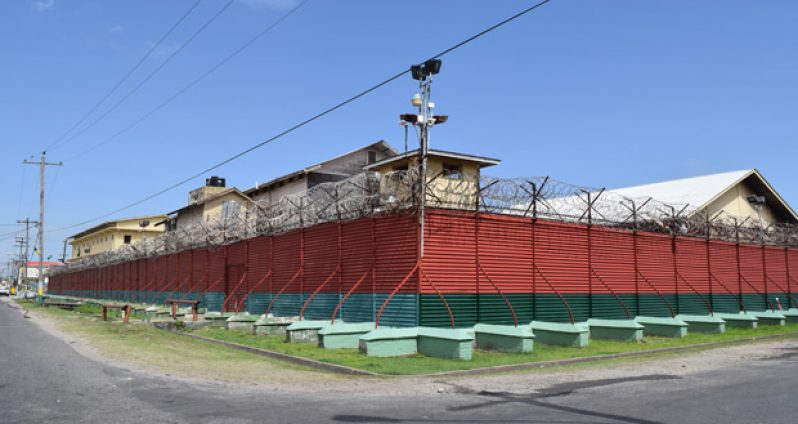By Shauna Jemmott
PETER Barker, Chief Prison Officer at the Georgetown Prisons, yesterday said the pressure of working long hours — night and day — under certain circumstances in the Camp Street prison compound caused him to collapse in the jail yard recently.He was on medical leave for a while, but returned to the job to again face the challenges.
He described it as tough for a prison officer to deal with the level of blatant disorder displayed by prisoners. He said that while smoking narcotics, prisoners would brazenly approach officers, and would even blow marijuana smoke in officers’ faces.
“As prisoners, walking around with two juckers in their waist and rolling up marijuana, smoking a big joint; and they walking in front of you and blowing smoke in your face; temptations (rise) sir,” Barker told the Commission of Inquiry (CoI) into the Georgetown Prison riots on Friday.
The prison officer said he has managed to control himself by holding on to something he learnt from former Director of Prisons (DoP) Dale Erskine, who is also a commissioner on the panel.
“My previous boss always told me to ‘think before you act’,” Barker said.
On March 3, the day 17 inmates were burnt to death during the riot, Barker said he reported to work at about 7:55 hours, and at about 10:25 hours, he and other ranks were instructed to take inmates out of the new Capital block in groups of five.
He testified that another officer, Owen Charles, tried opening the door, but it was suspected that the door was jammed. Officer-in-Charge at Georgetown Prisons, Kevin Pilgrim, approached the door and pleaded with prisoners to release the door. Shortly after, Charles opened the door, the CoI was told.
He said inmate Steve Allicock was extracted, and Shaka McKenzie had, up to a point, quietly complied with orders. According to the prison officer, it was when Collis Collison was being extracted by the prison task force that McKenzie began behaving badly.
Barker said that after a while he heard the breaking of the wall separating Capitals ‘A’ and ‘B’. He said he was downstairs at the back of the building when he observed thick smoke emanating from the Capital ‘A’ dormitory and heard prisoners crying for help.
“I heard some voices hollering ‘Fire! Fire! Fire! Fire!’ I coulda hear the prisoners hollering ‘Help! Fire!’”
Barker said he and other officers who were strategically placed to ensure other prisoners were secured also ran with the hose, trying to get water to extinguish the fire. He said he remained at the back of the building for security reasons – to ensure that prisoners did not break out of other divisions.
The officer testified that when he returned to the front of the building, he saw the “horrible scene” of a lifeless inmate lying on the corridor of Capital ‘A’.
“I did not go up to see anybody because ah couldn’t take it,” Barker said.
Noting that the keys were new and were not faulty, Barker said prisoners had jammed the door a second time, and were not cooperative in helping the officers in their attempts to open the Capital ‘A’ door during the riot.
“It’s not the first time they (Capital ‘A’ inmates) did it…we asking them to open the door, release whatever it is that you put behind the door so that it could be opened,” Barker said.



.jpg)








